US Navy Uniform Profile
Chief Petty Officer's Gray Working Uniform
(1943-1949)
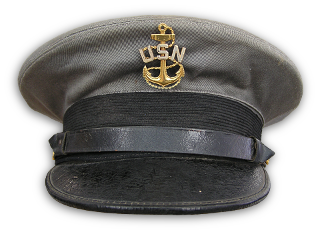
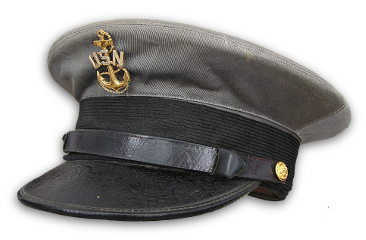
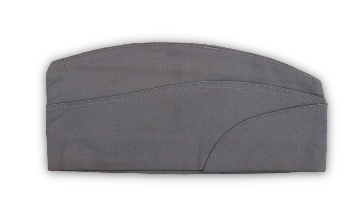
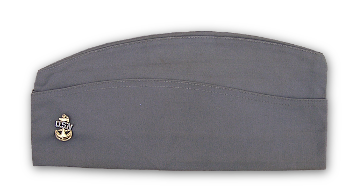
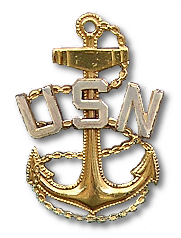
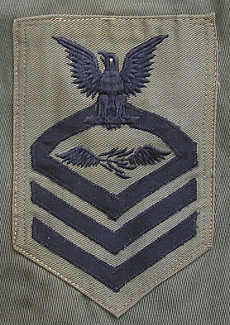
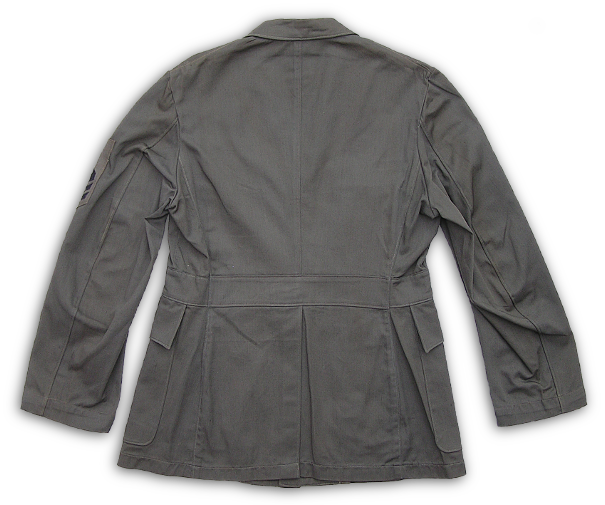
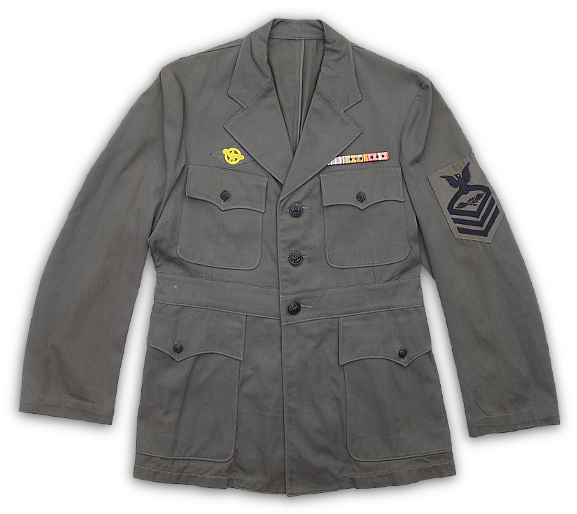
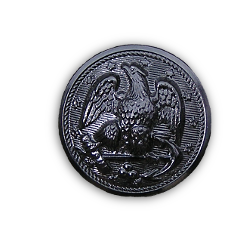

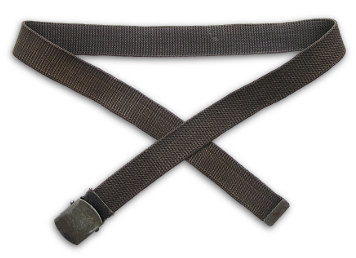
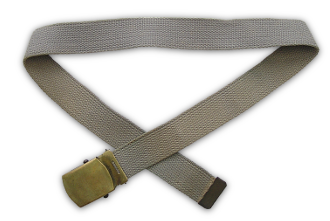
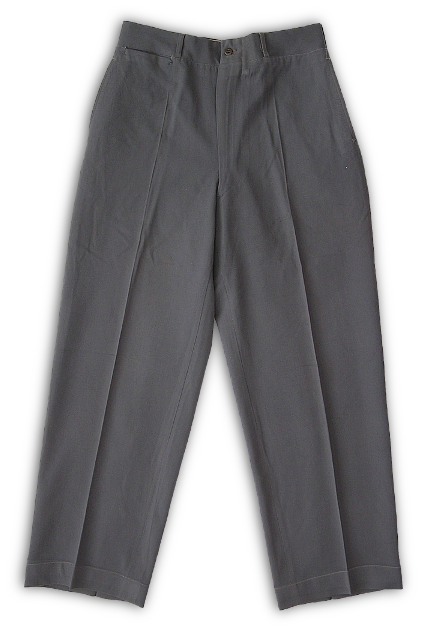
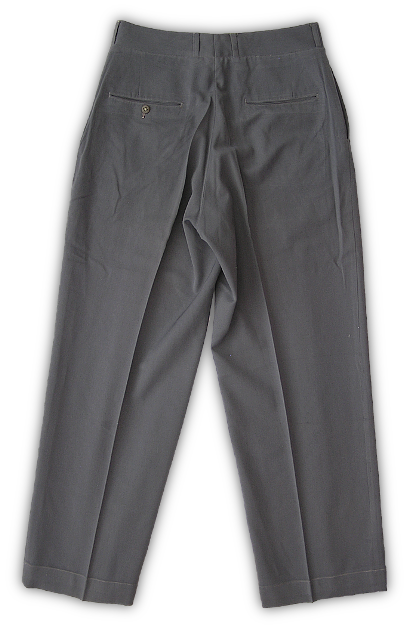

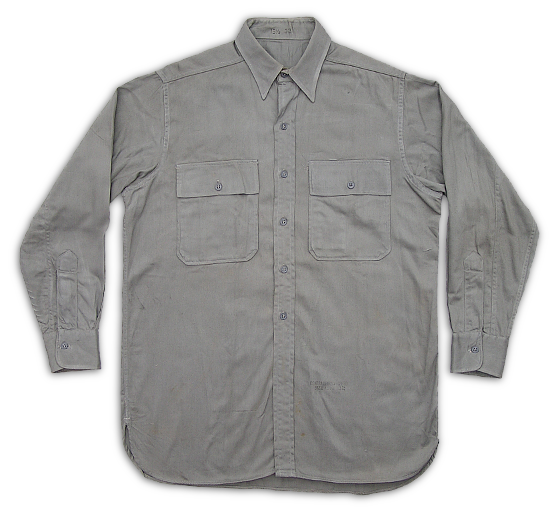
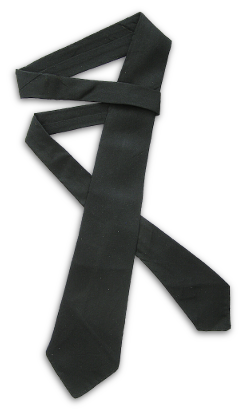
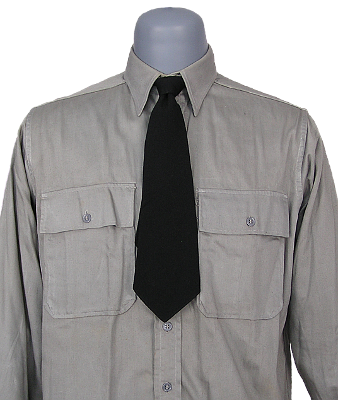
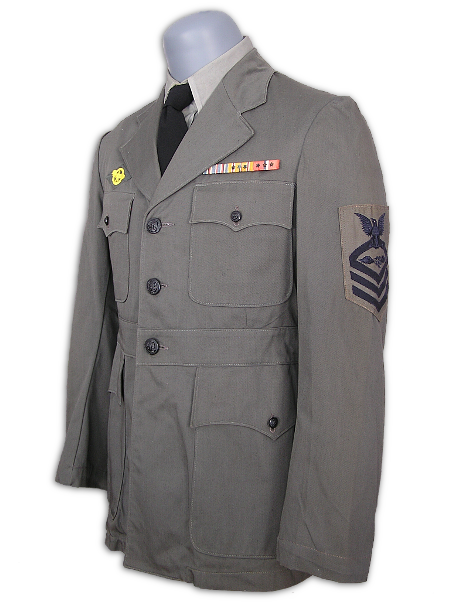
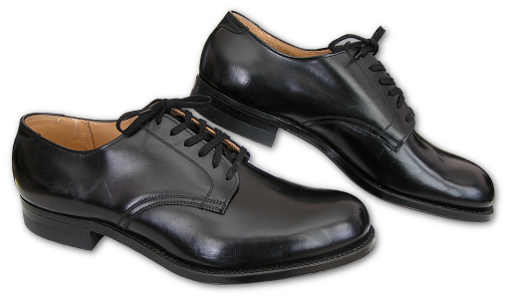
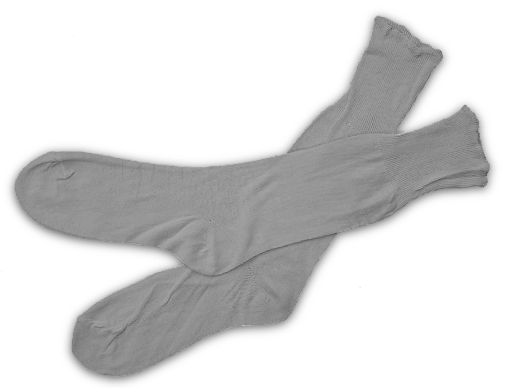
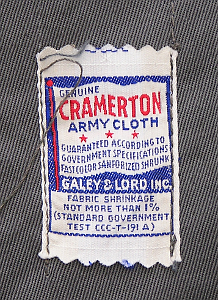
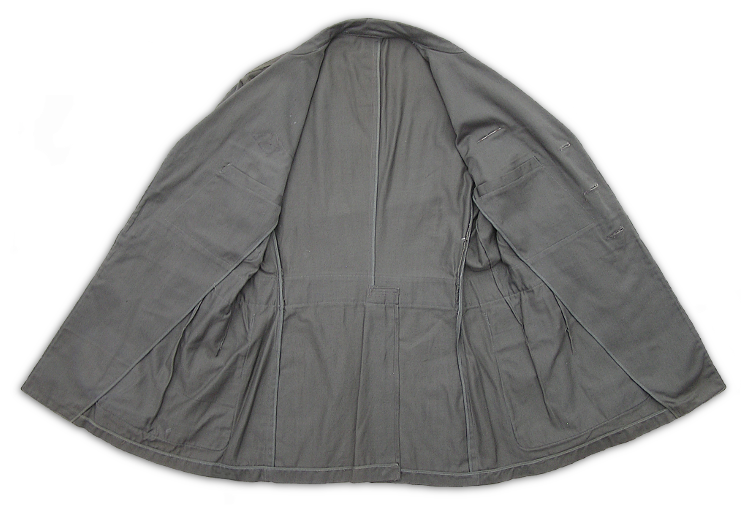

Chief Petty Officer's Gray Working Uniform
First announced in the spring of 1943, the Navy's new gray uniform was intended to bring simplicity and uniformity to the different types of work clothing officers and enlisted men wore aboard ship while also complimenting the overall camouflage scheme used at sea. Referred to as Slate Gray by the Navy, the color and was specifically intended to blend in with the gray paint used on ships at the time. It was also recognized that the new material would show less soiling than what was then in use. The gray uniform with its black ornamentation was markedly subdued when compared to the uniforms it was intended to replace; the khaki working uniform with gilt ornamentation for officers and CPOs and the conspicuous undress white uniform for enlisted men. As the gray material became available, a plan was in place to introduce the uniform in three phases; first would be officers, then Chief Petty Officers, and finally for all other enlisted men. However, replacement of the khaki uniform was never fully accomplished due to shortages of the 8.2 ounce cotton twill material required to produce the gray uniform. Thus, both the gray and khaki types were worn throughout the WW2 period. The 8.2 ounce cotton twill was used to manufacture olive drab combat uniforms for the Army and olive drab uniforms for Navy ground and amphibious landing forces. These needs were enormous and received precedence over re-outfitting Navy personnel with a new working uniform. Shortages of the required material was so acute that the plans for the enlisted man's gray uniform were cancelled shortly after it was announced resulting in only a relatively few of the type being produced. Shortages of cotton twill were persistent throughout much of the War, so in early 1945 lightweight 7.7 ounce cotton twill was also approved for the gray uniform.
On 3 June 1943 the gray uniform was approved for wear by Chief Petty Officers. The CPO gray uniform was essentially the same as the officer's version except for the placement and type of insignia worn on the cap and coat. Since the gray uniform was intended to be a replacement for the khaki, at the time it was announced that CPOs could continue to wear their khaki uniforms until stocks were exhausted or when replacement became necessary due to wear. The basic uniform consisted of a gray cotton twill coat and matching trousers, a gray shirt, and either a combination cap with gray cover or a matching garrison cap. Black shoes and tie were worn with this uniform.
Basic design elements of the gray uniform fell in line with the Navy's two established work uniforms of the time - the green and khaki types. Designed to allow for freedom of movement, the coat was well bloused and the trousers had loose hips and a low crotch. The coat featured a notched lapel collar, 3-button front closure, four large patch pockets, and a sewn on waist belt that added a touch of style and fit. Material, for the most part, was 8.2 ounce cotton twill, which was the type and weight approved by the military at the time for uniforms to be worn in warm to tropical weather conditions. However, other fabrics were used including light-weight woolens and other light-weight cottons including poplin. Woolen coats usually had a partial lining on the inside whereas cotton types were unlined.
The gray coat was simplified for mass production and thus exhibits some differences when compared to the khaki and green types. The lower pockets of the gray coat lacked the bellows pleats of the earlier working types. Additionally, the back lacked the expanding shoulder pleats of the green aviator's coat although this was allowed as an option if so desired. As mentioned, the CPO and officer's gray coat were essentially the same with the only difference being that the CPO coat lacked the pairs of small loops on the shoulders used to attach rank marks on the officer's coat. Rank insignia, known as a rate, was worn on the sleeve of the CPOs coat either on the left or right depending on branch of service. As the gray uniform was being phased in, CPOs were allowed to wear blue rates on the sleeve of the gray coat until gray rates became available. There was a similar situation with the coat buttons, which were made in black plastic. Until these became available, the standard metallic gilt buttons were allowed. Beginning in March 1944 it became a requirement that gray coats be worn with black buttons. Ribbon bars could be worn over the left breast pocket. The honorable discharge emblem, otherwise known as the Ruptured Duck, was applied over the right breast pocket upon receiving an honorable discharge from the Navy.
Either a combination cap or overseas garrison cap could be worn with the CPO gray uniform. The combination cap consisted of a frame with visor and a removable cover that was to match the color of the uniform being worn. At the front of the cap, the CPO cap device was pinned directly to the cap cover. The CPO cap device was unique to the rank and consisted of the letters USN superimposed on a fouled anchor. A miniature version of this device was worn on the left, front of the envelope-style garrison cap.
A light-weight, gray cotton shirt was worn with this uniform along with a black necktie. The shirt was a traditional design having a stand-up collar, front button placard and finished cuffs. Shirts were made in a lighter shade of gray to provide contrast with the other major uniform components. Neckties were made in wool, silk, or other synthetics. A web belt with sliding buckle was worn with the trousers and could be either black or gray in color. The prescribed shoe was black and of the standard high-top or low-quarter Navy design. Socks could be either black or gray.
Gray uniforms, including the coat, trousers, shirt, and garrison cap, were contracted for manufacture directly by the Navy and sold at approved retail outlets under the Navy Uniform Plan. This program established a network of official distributors and retailers of Navy uniforms that were under direct supervision of the Navy. Uniforms sold through this program had to adhere to navy regulated specifications, production standards, and pricing. Coats and trousers contracted by the Navy had a label identifying the manufacturer along with an associated contract number. These labels were conspicuous and were designed to be removed prior to wearing the garments. Shirts were usually permanently ink stamped on the lower front with similar contractor information. Gray uniforms were also manufactured and sold under a host of private uniform companies and these will usually bear either a maker's or tailor's label or both.
The roughly six year life span of the gray uniform was comparatively short for a uniform officially adopted by the US Navy. Once adopted, Navy uniforms, for the most part, changed very little and generally enjoyed an extended service life. However, it wasn't long into 1946 before the gray uniform was on its way out. In June 1946, the khaki working uniform was once again approved for purchase by officers and CPOs. At the same time it was announced that the gray working uniform would gradually be phased out and would not be permitted to be worn after 15 October 1948. This date was also earmarked as the official date that the khaki working uniform would be reinstated as the Navy's summer working uniform. In September 1948, a slight change occurred to the phaseout plans when it was ruled that the gray uniform could continue to be worn by personnel onboard ship until 15 October 1949. Thus it was officially in the fall of 1949 that the service life of a most curious and interesting US Navy uniform officially came to an end.